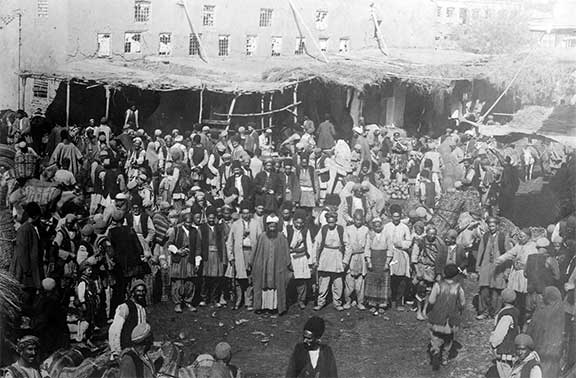1923 Reza Kahn Becomes Ruler of Persia
Reza Kahn arrived in Teheran on February 22,1923 commanding of an army of 4,000 troops. His forces toppled the government and he became the new leader of Persia. His government renounced its agreement with the British. Reza Khan then entered into an agreement with the Soviets that called for the Soviets to withdraw from Persia and allowed Persia to abrogate all concessions. In 1925 Reza Khan became Reza Shah Pahlavi. He followed a policy of modernization and development in Persia.
Reza Khan was born in 1878 in the northern province of Mazandaran, Iran. He joined the Persian Cossack Brigade, a military unit that was heavily influenced by Russian officers, and quickly rose through the ranks, eventually becoming the brigade's commander in 1921. Reza Khan's military background and leadership skills would prove instrumental in his rise to power.
Iran during the early 20th century was characterized by political instability, economic stagnation, and foreign interference, particularly from Russia and Britain. The Qajar dynasty, which had ruled Iran since the late 18th century, was weak and corrupt, unable to effectively govern the country or resist foreign influence. This created an environment ripe for change, and Reza Khan was well-positioned to take advantage of it.
In February 1921, Reza Khan, along with journalist and politician Sayyed Zia'eddin Tabatabaee, staged a successful coup against the Qajar government. With the support of the Persian Cossack Brigade, they seized power in Tehran and forced the Qajar Shah, Ahmad Shah, to appoint Tabatabaee as the new Prime Minister. Reza Khan was appointed as the Minister of War and later became the commander-in-chief of the Iranian armed forces.
Although the initial intention of the coup was to limit foreign influence in Iran and restore stability, it soon became apparent that Reza Khan had greater ambitions. He began consolidating power by eliminating potential rivals and reorganizing the military to strengthen his control. In 1923, Reza Khan forced Ahmad Shah to appoint him as Prime Minister, further solidifying his position.
During his time as Prime Minister, Reza Khan pursued a series of modernization and reform initiatives, aimed at strengthening Iran's economy, infrastructure, and military. These efforts garnered him significant popular support, as they were seen as necessary steps to counter foreign influence and restore Iran's sovereignty. However, they also led to tensions with the conservative religious establishment, which viewed his reforms as an attack on traditional values.
In 1925, Reza Khan turned his attention to the monarchy, pushing for the dissolution of the Qajar dynasty and the establishment of a new royal line. The Iranian parliament, the Majlis, voted to depose Ahmad Shah and declared Iran a republic. However, Reza Khan had no intention of allowing a republic to take root. Instead, he used his influence and military power to pressure the Majlis to proclaim him the new Shah of Iran, thus founding the Pahlavi dynasty.
Reza Shah Pahlavi's ascension to the throne marked the end of the Qajar era and the beginning of a new chapter in Iranian history. His reign was marked by continued efforts to modernize Iran and reduce foreign influence, including the introduction of secular education, the expansion of infrastructure, and the promotion of Iranian nationalism. However, these efforts were often pursued at the expense of personal freedoms and civil liberties, leading to a repressive and autocratic regime.
 >
>